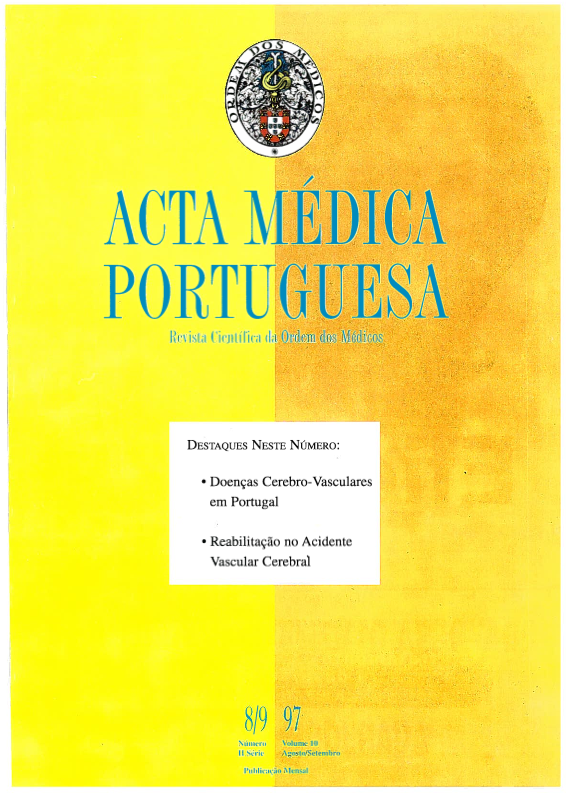Fibrinolysis in acute CVA: the current status.
DOI:
https://doi.org/10.20344/amp.2456Abstract
The use of thrombolytic therapy in acute ischemic stroke is still today a somewhat controversial subject. We come across authors who defend its undisputed use in adequately selected cases, others who are more sceptical and habitually place a question mark on this subject and a third group in expectation. Intra-arterial thrombolysis has very precise indications, its use in vertebrobasilar ischemic stroke remains inconclusive, eventually with a wider window. Five important randomised studies have taken place in recent years with thrombolysis administered intravenously. All three studies with Estreptoquinase--MAST-E, MAST-I and ASK--ended prematurely due to the high rates of mortality and intracranial haemorrhage observed in the group of patients treated with this drug. From the two main studies with rt-PA-ECASS and NINDS, the American trial showed somewhat higher results. The Guidelines from the American Heart Association for the use of rt-PA in ischemic stroke are presented. Fibrinolysis, when successful, only permits the restoration of blood flow in the area of ischemic suffering. This implies that, simultaneously, other therapeutic measures will have to be implemented.Downloads
Downloads
How to Cite
Issue
Section
License
All the articles published in the AMP are open access and comply with the requirements of funding agencies or academic institutions. The AMP is governed by the terms of the Creative Commons ‘Attribution – Non-Commercial Use - (CC-BY-NC)’ license, regarding the use by third parties.
It is the author’s responsibility to obtain approval for the reproduction of figures, tables, etc. from other publications.
Upon acceptance of an article for publication, the authors will be asked to complete the ICMJE “Copyright Liability and Copyright Sharing Statement “(http://www.actamedicaportuguesa.com/info/AMP-NormasPublicacao.pdf) and the “Declaration of Potential Conflicts of Interest” (http:// www.icmje.org/conflicts-of-interest). An e-mail will be sent to the corresponding author to acknowledge receipt of the manuscript.
After publication, the authors are authorised to make their articles available in repositories of their institutions of origin, as long as they always mention where they were published and according to the Creative Commons license.









